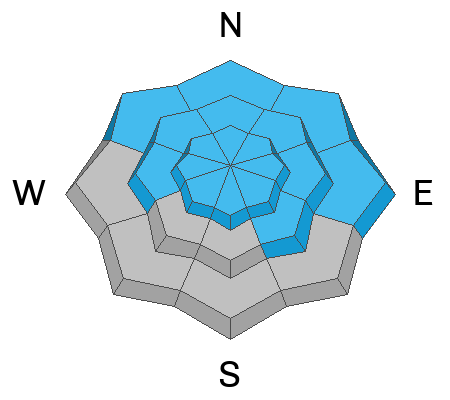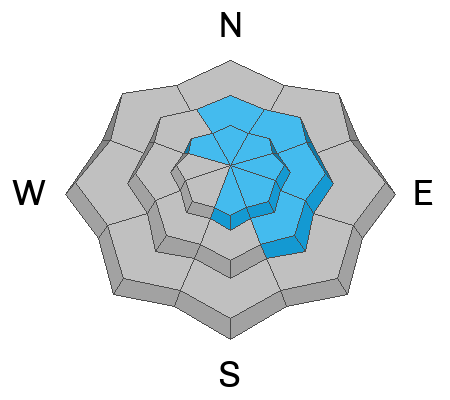Our annual party and fundraiser is coming up on December 6 in Logan at the Cache. 19th Annual Utah Avalanche Center Pray for Snow Party and Fundraiser information and tickets
HERE.
Join the Utah Avalanche Center and the Division of Outdoor Recreation to celebrate the Fourth Annual Avalanche Awareness week, from December 4 - December 11. Click
HERE to view the full list of events for the week.
A few highlighted events for the Logan area:
- Join us Wednesday, December 7th at USU for a Know Before You Go. Find more info HERE.
- Join us Saturday, December 10th at Beaver Mountain for FREE UAC and USU Beacon Clinic. Find more info HERE.
Dangerous avalanche conditions exist in the backcountry. Last week's heavy snow and drifting overloaded widespread slopes with buried persistent weak layers and poor snow structure. Dangerous human-triggered avalanches are likely on drifted upper and mid-elevation slopes. Nearly all parties have been reporting heart-stopping audible collapses or "wumpfs" and shooting cracks as they traveled through the new snow at mid and upper elevations. These are "bulls-eye" red flags indicating unstable snow and real potential for dangerous slab avalanches failing on a persistent weak layer.
This morning, skies are overcast. Remote weather stations at Tony Grove Lake and Franklin Basin have reported between 5-7" of new snow since yesterday morning. Temperatures are in the upper teens F to low 20s F, the wind has decreased since yesterday and is now blowing from the west-northwest between 10-20 mph with gusts near 30 mph.
Today will remain overcast this morning with light snowfall possible until noon with no additional accumulation expected. Skies will then become partly cloudy and temperatures will climb into the mid and upper 20s F, and winds will remain westerly averaging speeds of 10-20 mph, with gusts up to 30 mph at upper elevations.
No new avalanches were reported in the backcountry yesterday, but we had an active weekend with many submitting recent activity. Find the whole list below:
- Tony Grove Road - E Aspect - 6500' - Soft slab avalanche failing on SH buried 12" deep - 12/2
- Logan Peak/Fair Grounds Bowl - E Aspect - 9500' - Hard slab avalanche failing on a buried weak layer of facets 2.5' deep - 12/2 (See image below list)
- Beaver Creek Canyon - W Aspect - 7400' - Soft slab avalanche failing on a buried weak layer of facets - 12/2
- Red Pine Ridge - E Aspect - 9000' - Cornice triggered hard slab avalanche failing on a buried weak layer of facets - 12/2
- Three Terraces - E Aspect - 9000' - Cornice triggered hard slab avalanche failing on a buried weak layer of facets - 12/2
- North Face of Providence Peak - NE Aspect - 9300' - Hard slab avalanche failing on a buried weak layer of facets 2' deep - 12/2 (See the second image below list)
- Logan Dry Canyon - N Aspect - 7600' - Soft slab avalanche failing on surface hoar - 12/3
-
Mezzanine - NW Aspect - 7500' - Soft slab avalanche failing on a buried weak layer of facets 14" deep - 12/3
-
Mount Naomi Wilderness - W Aspect - 9200' - Hard slab avalanche failing on a buried weak layer of facets - 12/3
-
-
Grandfather Cornice - E Aspect - 9400' - Cornice triggered hard slab avalanche failing on a buried weak layer of facets 3' deep - 12/3
(See the third image below)
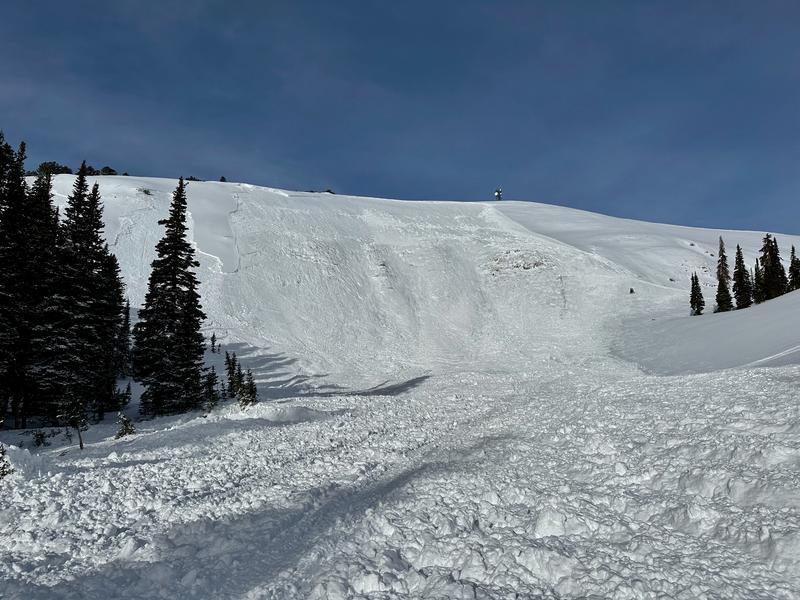
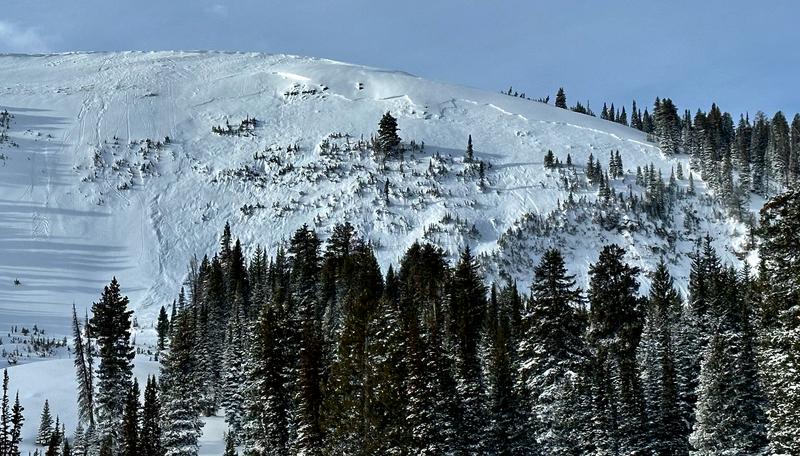
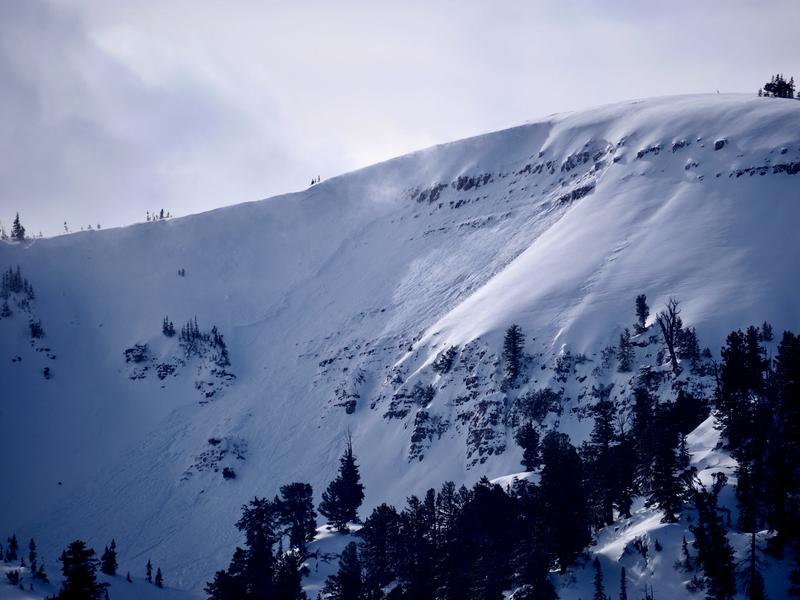
See our updated list of observed avalanches from across Utah
HERE 







